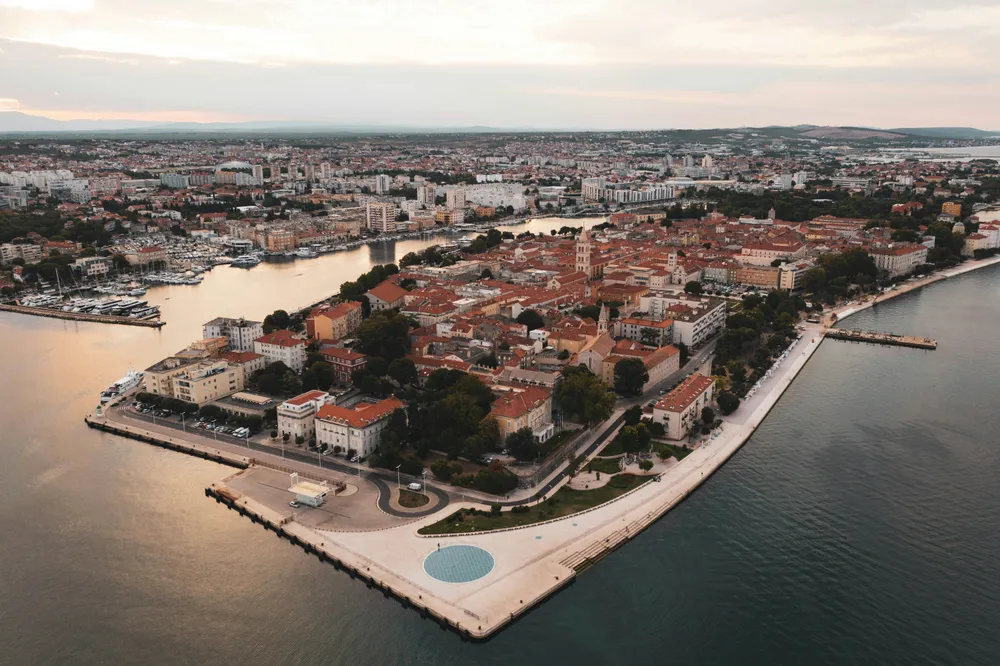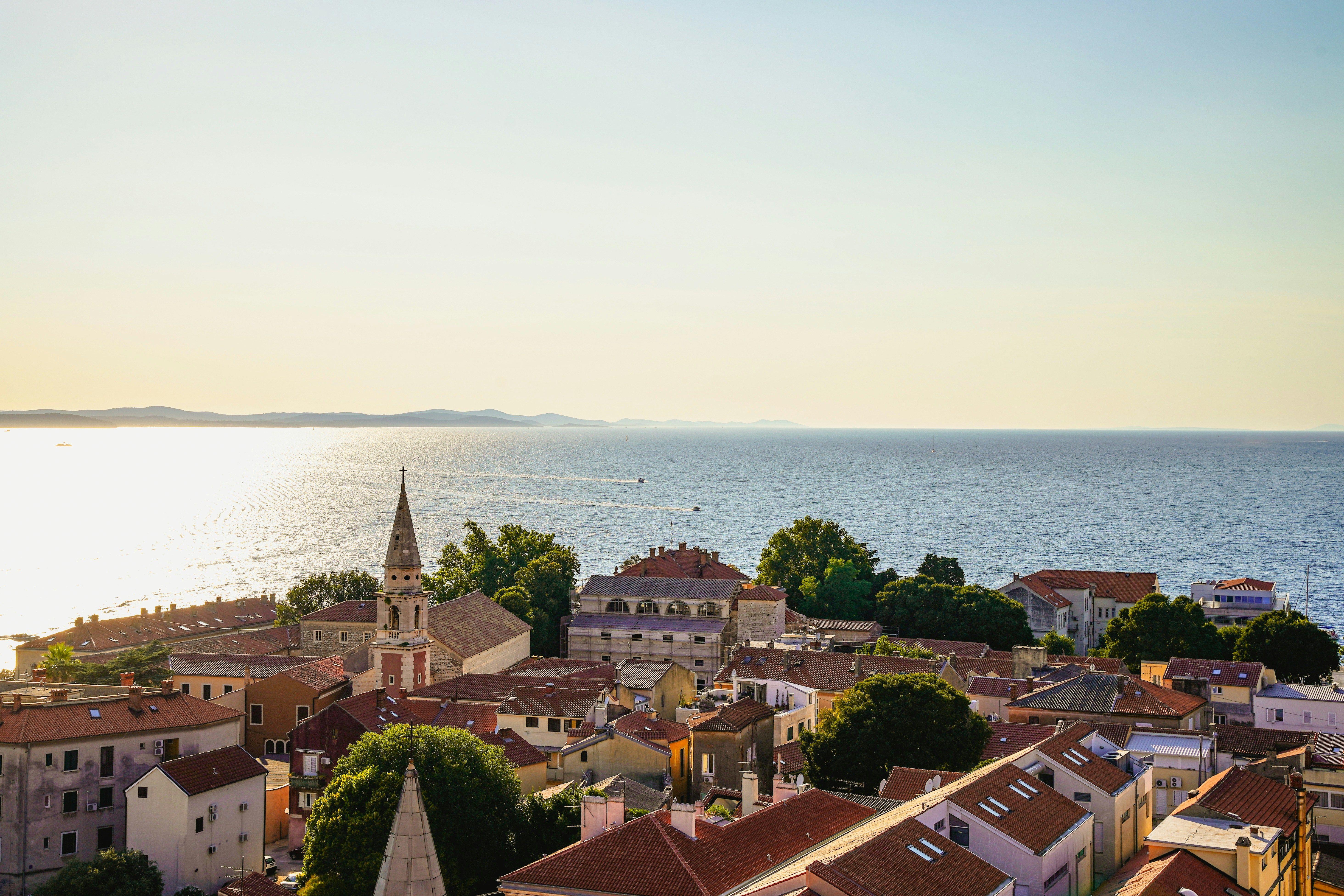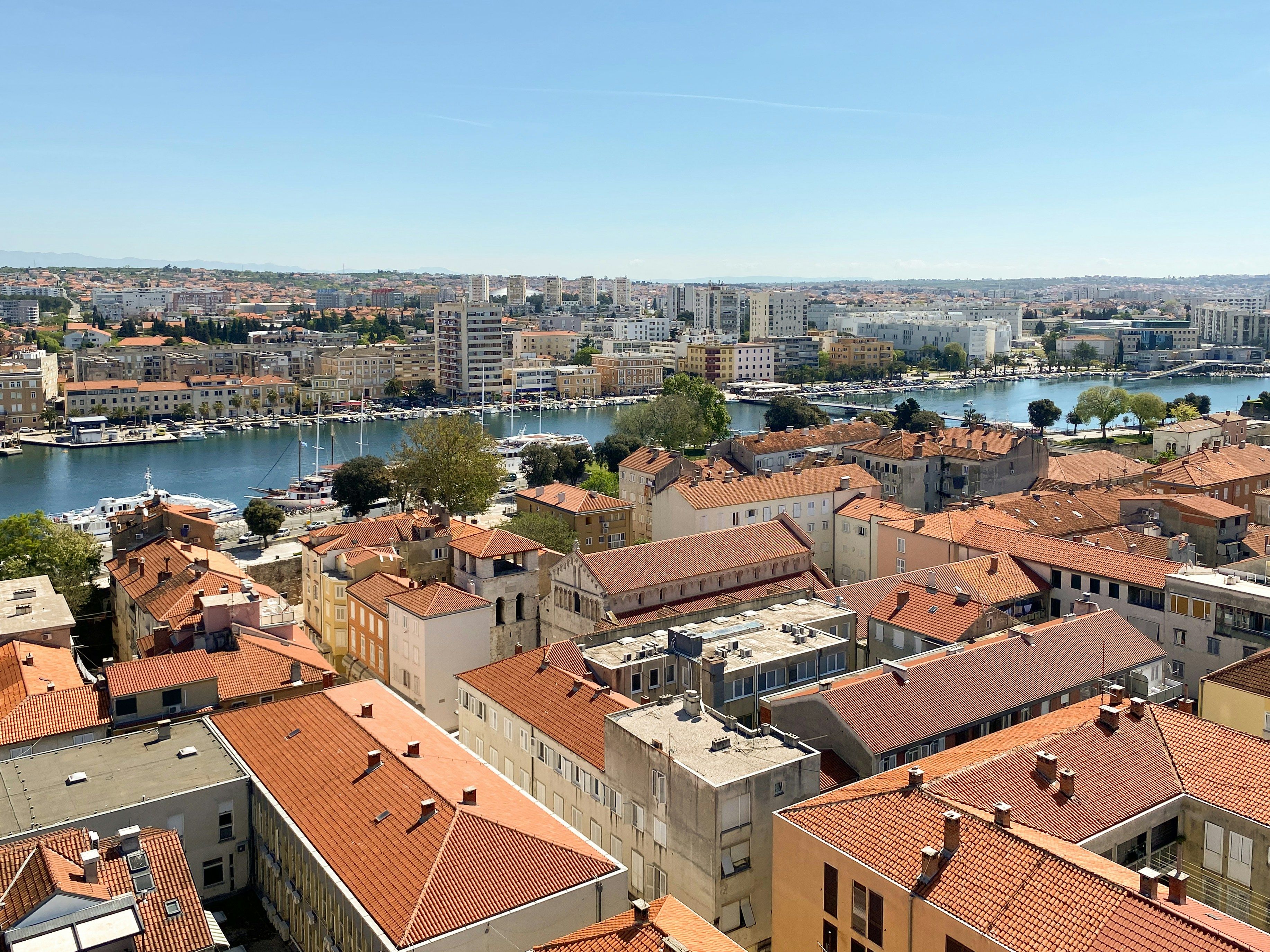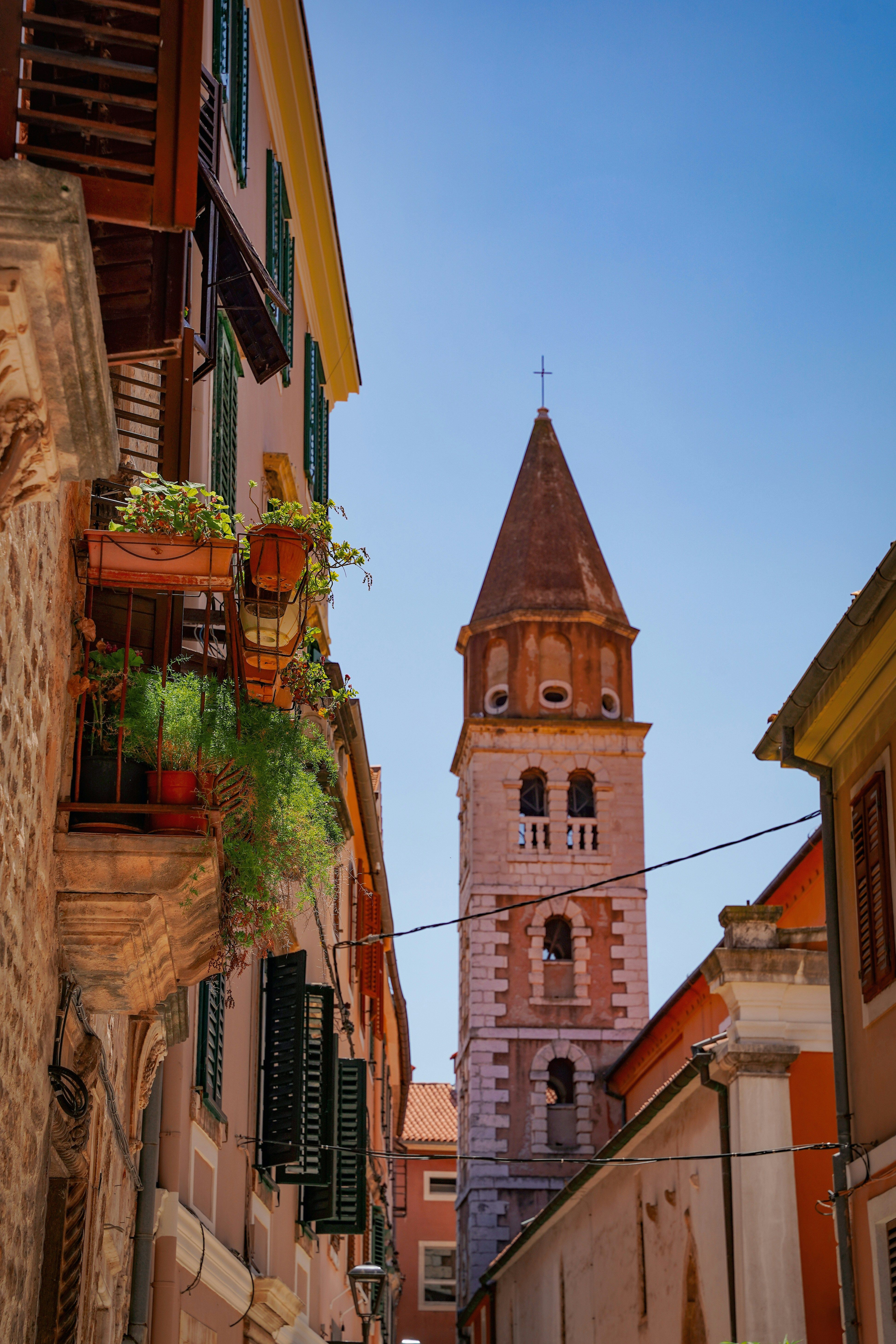Travelling from Ancona to Zadar: Complete Ferry & Travel Guide
Travel Guides
Travel Guides


Embarking on a journey from Ancona, Italy to Zadar, Croatia offers travellers a scenic route across the Adriatic Sea. This popular Mediterranean crossing spans approximately 199.9 km (124.2 miles) and connects two historically rich coastal cities. The ferry route between these destinations serves as a vital link for tourists and locals alike, offering a relaxing alternative to air travel. Whether you're planning a Croatian vacation or exploring the Adriatic coast, this comprehensive guide covers everything you need to know about travelling from Ancona to Zadar by ferry, including schedules, costs, port information, and what to expect upon arrival in the stunning Croatian city of Zadar.
When planning your journey from Ancona to Zadar, you have options to consider, with ferry travel being the most direct route across the Adriatic Sea.
The ferry connection between Ancona and Zadar spans 107.9 nautical miles (199.9 km) and provides a comfortable way to travel between Italy and Croatia. This route allows you to bring your vehicle if needed and enjoy the journey as part of your travel experience. With approximately one sailing daily during peak season, the ferry offers a convenient way to cross the Adriatic while enjoying onboard amenities.
While flight connections between these cities would typically involve transfers and multiple legs of travel, the ferry provides a direct link that allows you to relax and enjoy the sea views. The ferry journey takes around 8 hours 37 minutes on average, which may seem longer than flying, but eliminates the need for early airport arrivals, security lines, and transfers from airports to city centres.
For travellers who value scenery and comfort over speed, the ferry journey offers unparalleled views of the Adriatic and the opportunity to arrive rested and ready to explore. The overnight options also effectively save on accommodation costs while transporting you to your destination.
You can take a ferry from Ancona to Zadar. Ferries sail in around 8 hours 37 minutes with about 1 sailing a day. The fastest ferry sails in around 8 hours and is provided by Jadrolinija. Departures start as early as 10:00, with the last departure from Ancona to Zadar at 22:00.
Jadrolinija is the primary operator serving the Ancona to Zadar route. As Croatia's largest ferry company, they offer reliable service with vessels that are well-equipped for the Adriatic crossing. The company operates approximately 3 sailings per month on this route, with increased frequency during the summer tourist season.
Jadrolinija ferries on the Ancona-Zadar route offer various amenities to make your journey comfortable. Passengers can expect:

The Ancona to Zadar ferry route is seasonal, with most sailings occurring between April and October. During peak summer months (June-August), services are more frequent, and advance booking is highly recommended as spaces fill quickly, especially for vehicle transport. The shoulder seasons of May and September offer a good balance of regular service with fewer crowds.
In winter months, the service is significantly reduced or may not operate at all, so it's essential to check the latest schedules if travelling during the off-season.
Jadrolinija ferries accommodate cars, motorcycles, campervans, and bicycles. If you're planning to bring a vehicle, consider:
Ancona's port is centrally located and serves as one of Italy's major Adriatic ferry terminals. The port is within walking distance of the city centre, making it accessible for foot passengers.
Getting to the Port:
Terminal Facilities:
Zadar has two main port areas: the old town port (Gradska luka) for local ferries and the main ferry port at Gaženica, about 3.5 km from the city centre, where international ferries from Ancona arrive.
From the Port to Zadar Center:
Port Facilities:
While technically possible, a day trip from Ancona to Zadar is challenging due to the ferry schedule and journey duration. With the average crossing taking 8 hours 37 minutes and typically only one sailing per day, a true day trip would leave very little time to explore Zadar.
If you're determined to attempt a day visit, you would need to take a morning ferry (departing around 10:00) and return on a night sailing several days later, as daily return trips aren't possible. This would give you a few hours in Zadar before needing to return to the port.
A more practical approach would be planning at least an overnight stay in Zadar. This allows for a full day of exploration and the opportunity to experience the city's famous sunset and evening ambiance, including the Sea Organ and Sun Salutation installations that are best experienced at dusk.
For those with limited time, we recommend a minimum 2-night stay in Zadar. This would allow you to:
If time permits, extending your stay allows for day trips to nearby national parks like Krka or Plitvice Lakes, or island hopping to nearby destinations like Ugljan or Pašman.
1. Sea Organ & Sun Salutation
These unique architectural sound art installations by Nikola Bašić are Zadar's most famous attractions. The Sea Organ creates random harmonic sounds powered by sea waves, while the Sun Salutation captures solar energy during the day to create a spectacular light show at night. Open 24/7, they're best visited at sunset.
2. St. Donatus Church & Roman Forum
This 9th-century pre-Romanesque church is built atop the ancient Roman forum. Its unique circular shape and excellent acoustics make it a popular venue for summer musical performances. Open daily from 9:00-19:00 in summer and 10:00-16:00 in winter.
3. Zadar Cathedral
Dedicated to St. Anastasia, this 12th-century Romanesque cathedral features a beautiful façade and bell tower that visitors can climb for panoramic views of the city and sea. Open Monday-Saturday 10:00-18:00, Sundays 11:00-18:00.
4. Museum of Ancient Glass
Housing one of Europe's finest collections of Roman glassware, this museum offers fascinating glass-blowing demonstrations and workshops. Open Tuesday-Sunday 9:00-21:00 in summer, 9:00-19:00 in winter.
5. The Greeting to the Sun
Located near the Sea Organ, this 22-metre diameter installation consists of 300 multi-layered glass plates that collect solar energy during the day and produce a light show at night. Best visited after sunset.

Old Town Peninsula
The heart of historic Zadar is a pedestrianised zone packed with Roman ruins, medieval churches, museums, and cafés. This compact area is perfect for walking and contains most of the city's main attractions.
Borik
Located about 3.5 km northwest of the old town, this area is known for its beaches and resort hotels. It's connected to the centre by regular bus service and offers a more relaxed atmosphere.
Diklo
This upscale residential area extends beyond Borik and features pleasant beaches, seafront promenades, and quality restaurants. It's ideal for those seeking a quieter stay while remaining close to the city.
Puntamika
Located between the old town and Borik, this neighbourhood offers lovely beaches and is home to the famous Punta Bajlo restaurant area, known for excellent seafood establishments.
Zadar enjoys a Mediterranean climate with warm, dry summers and mild, wet winters. This makes it an appealing destination for much of the year, though ferry operations can be affected by seasonal conditions.
Summer (June-August): Peak tourist season brings average temperatures between 25-30°C (77-86°F). Water temperatures reach a pleasant 23-25°C (73-77°F), perfect for swimming. Summer sees very little rainfall, with an average of just 2-3 rainy days per month. This is the busiest time for ferry crossings, with the most frequent services and calmest sea conditions.
Spring (March-May) and Autumn (September-November): These shoulder seasons offer comfortable temperatures ranging from 15-25°C (59-77°F). Spring brings increasingly warm days, while autumn remains warm until late October. These periods see moderate rainfall, usually as short showers rather than prolonged downpours. Ferry services operate regularly but with reduced frequency compared to summer.
Winter (December-February): Winters are mild by European standards, with temperatures typically between 5-12°C (41-54°F). This is the wettest season, with 10-12 rainy days per month. The Adriatic can experience strong bora winds during winter, which occasionally affects ferry schedules. As the Ancona-Zadar route is seasonal, winter services are limited or non-existent.
For ferry travellers, it's worth noting that the Adriatic can experience sudden weather changes. While summer generally offers smooth sailing, shoulder seasons might occasionally see rougher conditions. Ferry operators prioritise safety and may delay or cancel crossings during adverse weather, so building flexibility into your travel plans is advisable, especially outside peak summer.
Zadar offers excellent value compared to many Western European destinations, though prices have risen in recent years as Croatia's popularity has grown.
Accommodation: Budget travellers can find hostel beds from £15-25 per night, while mid-range hotels typically range from £60-100 per night. Luxury options and waterfront properties can exceed £150-200 per night, especially in high season.
Food and Drink: A casual meal at a konoba (traditional restaurant) costs around £10-15 per person, while a three-course dinner at a mid-range restaurant runs approximately £20-30. Coffee in a café costs £1-2, local beer about £2-3, and a glass of wine £3-4.
Transportation: City bus tickets cost around £1 per journey or £8 for a day pass. Taxis start at about £3 plus £1 per kilometre. Renting a small car costs approximately £30-50 per day, depending on the season.
Activities: Many of Zadar's attractions, like the Sea Organ and Sun Salutation, are free. Museum entries typically cost £3-8. Boat excursions to nearby islands range from £20-40 for half-day trips.
Daily Budget Guidelines:
To save money, consider visiting in shoulder seasons (May-June or September-October) when prices drop but the weather remains pleasant. Many restaurants offer fixed-price lunch menus that provide excellent value compared to dinner prices.
The ideal time to visit Zadar depends on your preferences for weather, crowds, and activities, as well as ferry availability since the Ancona-Zadar route is seasonal.
Peak Season (July-August): These months offer the hottest temperatures (averaging 28-30°C) and warmest sea for swimming. This is when Zadar comes alive with festivals, outdoor concerts, and bustling café culture. However, this period also brings the largest crowds and highest prices. The Old Town can become quite congested, and attractions may have queues. Ferry services from Ancona are most frequent during this time, with regular sailings.
Shoulder Season (May-June and September-October): Many consider these months the sweet spot for visiting Zadar. Temperatures remain pleasant (20-25°C), the sea is warm enough for swimming (especially in September), and crowds thin considerably. Accommodation prices drop by 20-30% compared to peak season. This period offers a more relaxed experience while still enjoying good weather and open attractions. Ferry services continue to operate, though with somewhat reduced frequency.
Off-Season (November-April): Winter brings mild temperatures (8-14°C) and fewer tourists, allowing for a more authentic experience of local life. Many coastal restaurants and some attractions operate on reduced hours or close entirely, but city life continues. Accommodation prices reach their lowest, often 50-60% less than summer rates. The main drawback is that ferry service from Ancona is limited or non-existent during this period.
For specific interests:
If your primary concern is ferry travel from Ancona, plan your visit between April and October when services are operating. For the best combination of good weather, reasonable prices, and ferry availability, early June or mid-September are excellent choices.

Finding the perfect place to stay in Zadar is easy with options to suit every budget and travel style. The historic Old Town offers charming boutique accommodations within walking distance of major attractions, though prices tend to be higher in this prime location.
Solo travellers will appreciate the friendly hostels scattered around the city centre, with dorm beds starting from around £15-25 per night. Couples might enjoy the romantic atmosphere of privately-owned apartments in the Old Town, typically ranging from £50-90 per night depending on the season.
Families travelling to Zadar can find excellent value at the beachfront hotels along the Borik and Diklo areas, just a short bus ride from the centre. These family-friendly resorts often include pools, kids' activities, and spacious rooms from £80-150 per night.
For those arriving by ferry and seeking convenience, several good mid-range hotels are located within walking distance of the port area, making your arrival and departure seamless.
Zadar is a wonderfully walkable city, especially the compact Old Town peninsula where most historical attractions are concentrated. You can easily explore the Roman ruins, Sea Organ, and mediaeval churches on foot.
The city operates an efficient bus network that connects all major neighbourhoods, beaches, and attractions. Single tickets cost approximately £1.20, while day passes offer better value at around £3.50. Buses run frequently during summer months to accommodate tourists.
Taxis are readily available throughout Zadar, with starting fares around £3 plus £1 per kilometre. For more budget-conscious travellers, ride-sharing apps also operate in the city.
Renting a bicycle is a popular option during the warmer months, with daily rentals starting from about £10-15. The flat terrain and dedicated cycling paths make this an enjoyable way to explore both the city and surrounding coastline.
If you plan to venture beyond Zadar to nearby national parks or coastal towns, car rentals are available from several agencies near the port and in the city centre, starting from approximately £30-40 per day.
The Ancona to Zadar ferry route creates a perfect bridge between Italy and Croatia, offering a convenient and scenic journey across the Adriatic. With Jadrolinija operating regular crossings taking approximately 8 hours, this sea route provides a relaxing alternative to flying, allowing you to bring your vehicle and enjoy the journey as part of your holiday experience.
Remember that this seasonal route operates primarily during summer months, with approximately three sailings per month. Departures can be as early as 10:00 or as late as 22:00, giving you flexibility in planning your journey.
Whether you're planning a Croatian coastal adventure, seeking the historical treasures of Zadar, or using this beautiful city as a gateway to explore more of the Dalmatian coast, the ferry from Ancona provides a perfect start to your journey.
Book your Ancona to Zadar ferry tickets in advance, especially during peak summer season, to secure your preferred sailing dates and the best possible fares for this popular crossing.